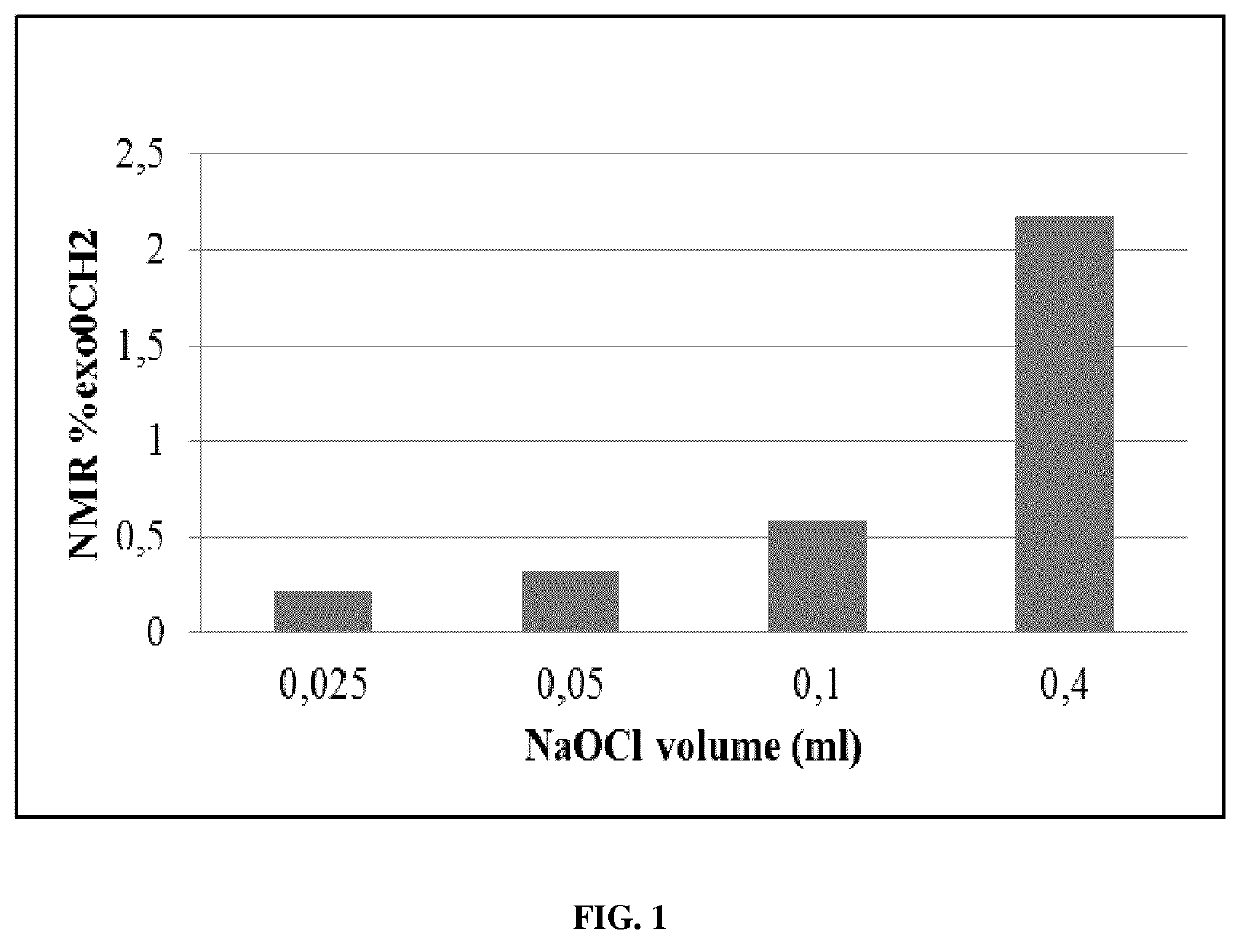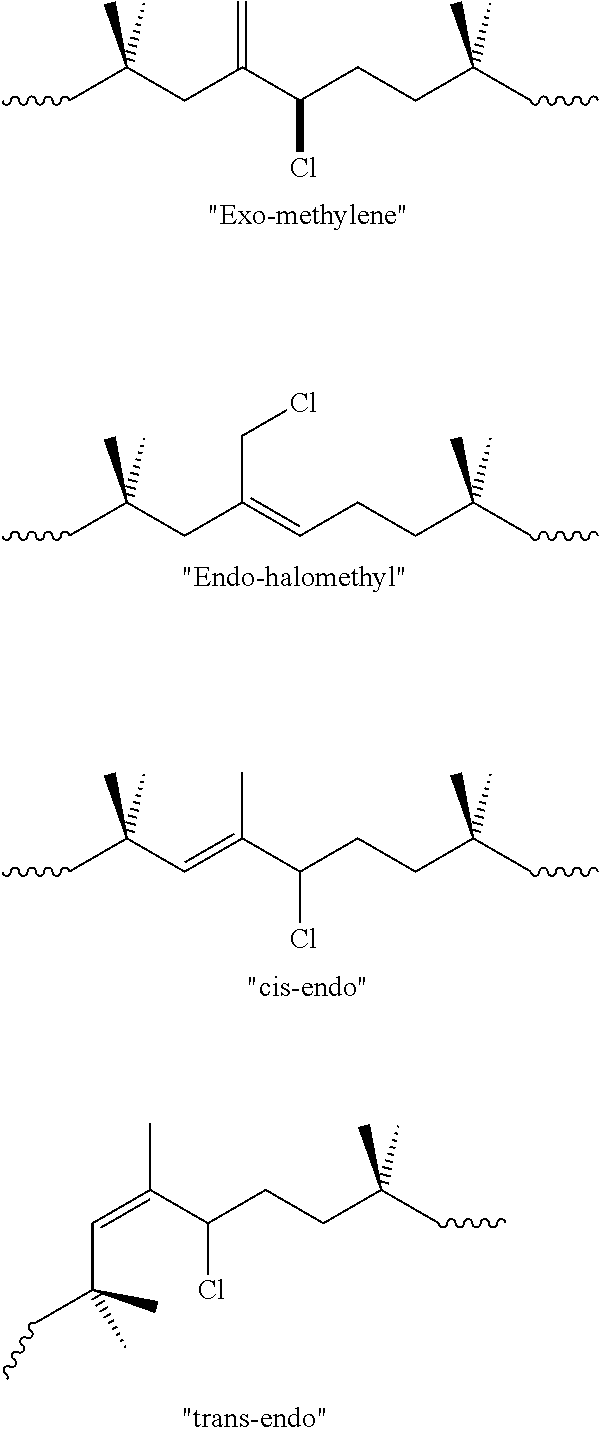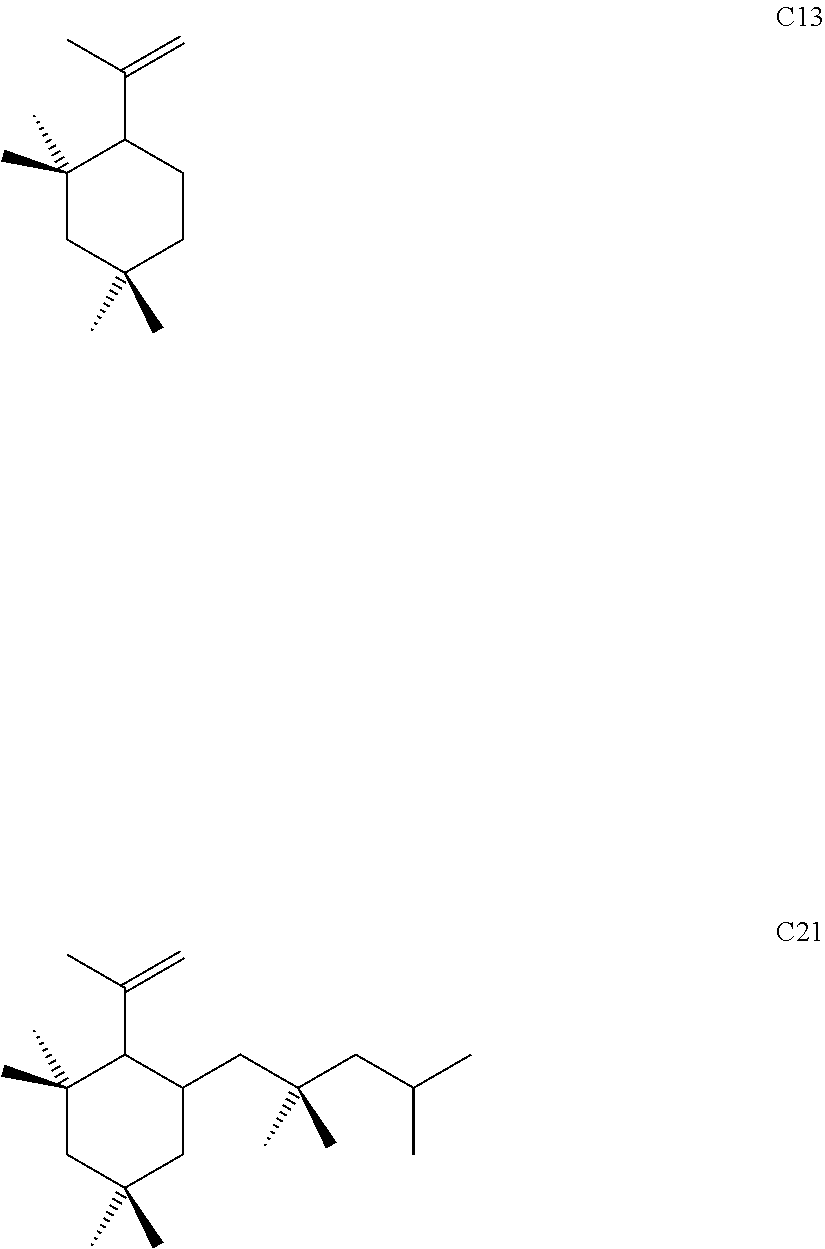Process for producing chlorinated butyl rubber
a technology chlorinated butyl rubber, which is applied in the field of chlorinated butyl rubber preparation, can solve the problems of halogenated cyclic oligomers, the relative ratio of microstructures cannot be influenced in a very narrow range, and the need for substantial technical effort to handle them safely
- Summary
- Abstract
- Description
- Claims
- Application Information
AI Technical Summary
Benefits of technology
Problems solved by technology
Method used
Image
Examples
examples
[0167]Materials Commercially available reagents and solvents were used without further purification unless otherwise stated. Hexane was purchased from VWR International. Sodium hypochlorite solution was purchased from Sigma-Aldrich (11% available chlorine). Bleach used was household bleach with 4.25 wt-% sodium hypochlorite.
[0168]The following isoprene-isobutene rubbers were used as starting material:
[0169]Regular Butyl Rubber #1 (RB#1) having an isoprene content of 3.8 mol %, a Mooney viscosity [ML1+8 at 125° C., ASTM D 1646] of 36, an Mn of 169 kD and an Mw of 491 kD
[0170]Regular Butyl Rubber #2 (RB#2) having an isoprene content of 1.9 mol %, a Mooney viscosity [ML1+8 at 125° C., ASTM D 1646] of 31, an Mn of 119 kD and an Mw of 496 kD
[0171]All other materials were prepared by known literature procedures or are described in detail below.
[0172]Methods and Instrumentation
[0173]Reactions performed above ambient room temperature were done so in an oil bath or aluminum block heated exte...
examples 1a to 1d
[0174]Chlorination of RB#1 with Sodium Hypochlorite in Various Amounts
[0175]A 1 g portion of dry RB#1 was dissolved in 15 ml of hexane. Approximately 1 mg of BHT was added to the RB#1 solution to reduce chain-scission reactions. Various amounts of sodium hypochlorite solution (Sigma Aldrich, see above: 1a: 0.025 ml; 1b: 0.05 ml; 1c: 0.1 ml; 1d: 0.4 ml) were dissolved in 10 ml of water in a 100 ml round bottom flask. The hexane solution comprising RB#1 and BHT in hexane was added to said sodium hypochlorite solution. A 0.4 ml portion of acetic acid was added and the resulting mixture stirred in the dark for 30 minutes.
[0176]The reaction mixture was added to 50 ml acetone. The coagulated rubber was dried and analyzed using 1HNMR and Gel Permeation Chromatography (GPC).
[0177]Reacting different amounts of sodium hypochlorite with RB#1 allowed the synthesis of products with different chlroination levels. Analysis of the 1H NMR spectra of the product confirmed the formation of chlorobutyl...
example 2
[0178]Chlorination of RB#1 with Sodium Hypochlorite
[0179]A 100 g portion of dry RB#1 was dissolved in 1000 ml of hexane. Approximately 100 mg of BHT was added to the RB#1 solution to reduce chain-scission reactions. 100 ml of water (10%) was added to the solution and mixed for 2 minutes. Sodium hypochlorite solution (Sigma Aldrich, see above) 10 ml was added followed by 9.5 ml of acetic acid. The solution mixture was stirred exposed to light for 20 minutes. 12 ml of 10 wt-% NaOH was added to the reaction and washed several times with water. The pH of the water waste was around 6. The rubber was steam coagulated and dried. The resulting product was analyzed using 1HNMR and GPC.
PUM
| Property | Measurement | Unit |
|---|---|---|
| pKa | aaaaa | aaaaa |
| pKa | aaaaa | aaaaa |
| pKa | aaaaa | aaaaa |
Abstract
Description
Claims
Application Information
 Login to View More
Login to View More - R&D
- Intellectual Property
- Life Sciences
- Materials
- Tech Scout
- Unparalleled Data Quality
- Higher Quality Content
- 60% Fewer Hallucinations
Browse by: Latest US Patents, China's latest patents, Technical Efficacy Thesaurus, Application Domain, Technology Topic, Popular Technical Reports.
© 2025 PatSnap. All rights reserved.Legal|Privacy policy|Modern Slavery Act Transparency Statement|Sitemap|About US| Contact US: help@patsnap.com



